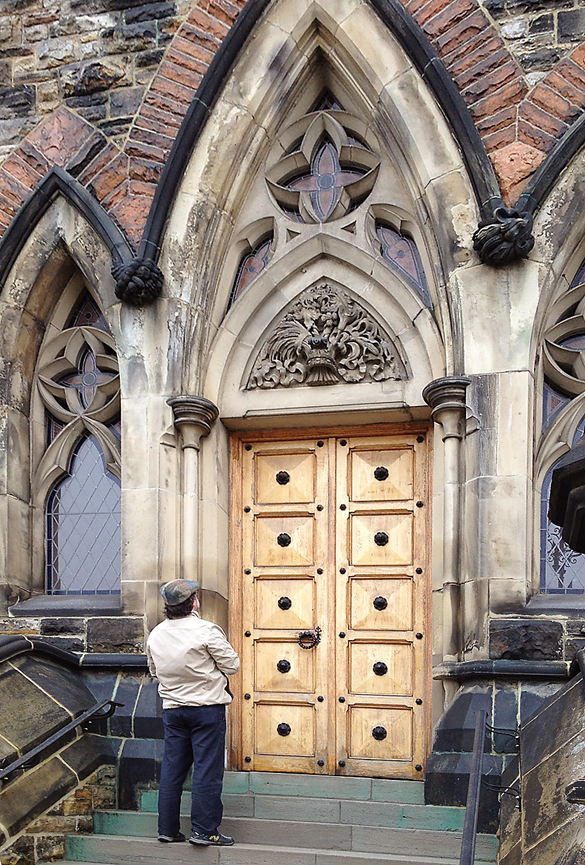I spent a very pleasant part of my morning on Thursday helping out some senior students in the School of Journalism and Communication with a short documentary video they are producing on the renovations underway at Parliament Hill. The piece is primarily about the sculptors who are working on the West Block, but my role was to say a few words about the architectural merits of the East Block (which is easier to discuss, since it’s not shrouded in scaffolding and the seemingly endless layers of secrecy that envelope so much of what happens around the Hill these days).
After agreeing to do this I realized I had a bit of homework to do, so in preparation I made my way downtown on the weekend to re-acquaint myself with the East Block. I was frankly amazed by how impressive it is. It’s a tour de force of what nineteenth-century theorist John Ruskin would have called (with entirely complimentary intent) ‘savageness’ – robust, muscular, visceral, full of colliding colours and textures, bursting with the ideas of the people who made it. The exterior carving alone could keep you occupied for hours. Every boss, every corbel, every label stop, every grotesque is different – you can practically hear the craftsmen thinking aloud as they resolve the unique problems posed by every piece. Ruskin would have loved it.
It served as a reminder of what an incredible treasure-chest of architecture we have here in Ottawa. Assorted jewels from that treasure will be the subjects of numerous future blogs.

